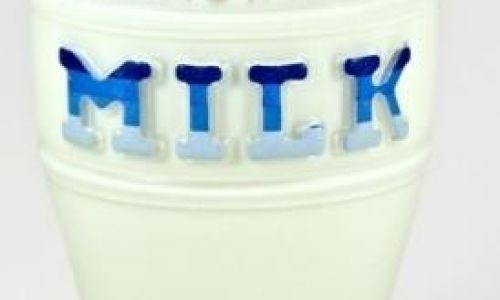Table of content
- 1 Ideal Refrigeration Temperature
- 2 Avoiding Temperature Fluctuations
- 3 The Two-Hour Rule
- 1 Opaque vs. Transparent Containers
- 2 Sealing Tightly
- 3 Single-Use vs. Reusable Containers
- 1 Pasteurized Milk
- 2 Raw Milk
- 3 Plant-Based Milks
- 1 Avoiding Cross-Contamination
- 2 Organizing for Efficiency
- 1 Avoiding Back-Sipping
- 2 Freezing Milk: A Last Resort
- 3 Inspecting Before Use
- 1 Lactose-Free Milk
- 2 Condensed and Evaporated Milk
- 3 Powdered Milk
Introduction
Milk, a staple in households worldwide, is a perishable commodity that demands careful handling to preserve its quality, nutritional value, and safety. From pasteurized cow’s milk to plant-based alternatives like almond or oat milk, the way you store this liquid gold can mean the difference between a nourishing beverage and a spoiled hazard. This article delves into the intricacies of milk storage, exploring temperature control, packaging, shelf life, and common pitfalls to avoid. Whether you’re a casual consumer or a dairy enthusiast, understanding these principles will help you maximize freshness, minimize waste, and safeguard your health.
Temperature Control: The Golden Rule
Milk’s enemy number one is time and temperature abuse. Bacteria thrive in the “danger zone” between 40°F (4°C) and 140°F (60°C), multiplying rapidly enough to spoil milk or cause foodborne illnesses. To counter this, refrigeration is non-negotiable—but not all fridges are created equal.
1 Ideal Refrigeration Temperature
The FDA recommends keeping your refrigerator at or below 40°F (4°C), but for milk, a stricter 34–38°F (1–3°C) is optimal. This slight chill slows bacterial growth without freezing the milk, which could damage its texture. Invest in a fridge thermometer to monitor accuracy, as built-in dials often miscalculate.

2 Avoiding Temperature Fluctuations
Every time you open the fridge door, warm air rushes in, causing internal temperatures to spike. Store milk on the lower shelves, where temperatures are most stable, rather than the door compartments. Avoid placing containers near vents, fans, or the freezer compartment, as these areas may expose milk to freezing or excessive cold.
3 The Two-Hour Rule
Never leave milk at room temperature for more than two hours (or one hour if the ambient temperature exceeds 90°F/32°C). This window allows bacteria to proliferate to unsafe levels. If you’re hosting a party or stocking a buffet, use ice baths or nested containers to keep milk chilled.
Packaging Matters: Choosing the Right Container
Milk’s packaging isn’t just for convenience—it’s a barrier against light, air, and contaminants. The material and design of the container can significantly impact shelf life.
1 Opaque vs. Transparent Containers
Light exposure triggers chemical reactions in milk, breaking down riboflavin (vitamin B2) and oxidizing fats, leading to off-flavors and nutrient loss. Opaque containers, such as cardboard cartons or pigmented plastic jugs, block light effectively. Clear glass or plastic bottles, while aesthetically pleasing, should be stored in darkness or wrapped in foil.
2 Sealing Tightly
Exposure to air accelerates spoilage by promoting oxidation and bacterial growth. Always secure the lid tightly after each use. If the original cap is damaged, transfer milk to a clean, airtight container. Avoid using containers that previously held non-dairy items (e.g., sauces), as residues can cause cross-contamination.
3 Single-Use vs. Reusable Containers
While reusable glass jars are eco-friendly, they require thorough sterilization between uses. Boil jars for 10 minutes or run them through a dishwasher’s sanitizing cycle. Plastic containers, especially those labeled “HDPE” (high-density polyethylene), are durable but may absorb odors over time.
Shelf Life: Understanding Expiration Dates
Milk’s longevity depends on processing methods and storage conditions. Here’s a breakdown of common types:
1 Pasteurized Milk
- Standard Pasteurization (HTST): Heated to 161°F (72°C) for 15 seconds, yielding a shelf life of 1–3 weeks unopened.
- Ultra-Pasteurization (UHT): Heated to 280°F (138°C) for 2–4 seconds, extending shelf life to 2–3 months unopened. UHT milk can be stored at room temperature until opened.
2 Raw Milk
Unpasteurized milk lacks the safety benefits of heat treatment and typically spoils within 3–7 days, even when refrigerated. Its consumption is illegal in some regions due to health risks.
3 Plant-Based Milks
- Shelf-Stable Varieties (e.g., boxed almond milk): Can last 6–12 months unopened if stored in a cool, dry place. Refrigerate after opening.
- Refrigerated Varieties (e.g., fresh soy milk): Consume within 7–10 days of opening.
Storage Location: Beyond the Fridge Door
The refrigerator’s design impacts milk’s longevity. The door, while convenient, is the warmest area due to frequent opening. Instead, designate a spot on the middle or lower shelves, where temperatures hover around 35°F (2°C).

1 Avoiding Cross-Contamination
Store milk away from strong-smelling foods (e.g., onions, garlic) to prevent odor absorption. Use dedicated compartments or bins to isolate dairy products.
2 Organizing for Efficiency
Adopt the “first-in, first-out” rule: Place newer milk containers behind older ones to ensure timely consumption. Label cartons with purchase dates using waterproof markers.
Handling Practices: Hygiene and Portion Control
Even with proper storage, mishandling can compromise milk quality.
1 Avoiding Back-Sipping
Never return unused milk to the original container after pouring, as this introduces bacteria from your mouth or utensils. Use a clean pitcher or measuring cup instead.
2 Freezing Milk: A Last Resort
While freezing extends shelf life (up to 3 months for cow’s milk), it alters texture, causing separation and graininess. Thaw frozen milk in the refrigerator and shake well before use. Avoid freezing goat’s milk or cream, as they fare poorly in texture.
3 Inspecting Before Use
Always check for signs of spoilage:
- Sour odor: A sharp, unpleasant smell indicates bacterial activity.
- Lumpy texture: Curdled milk has separated due to acidity.
- Off taste: Even if milk looks fine, a bitter or metallic flavor signals spoilage.
Special Considerations for Different Milk Types
Not all milks are created equal. Here’s how to store popular varieties:
1 Lactose-Free Milk
Follow the same rules as regular pasteurized milk. Its enzymatic treatment doesn’t affect storage requirements.
2 Condensed and Evaporated Milk
Unopened cans of sweetened condensed milk can last up to a year in a pantry. Once opened, transfer to a sealed container and refrigerate for 1–2 weeks.

3 Powdered Milk
Store in an airtight container in a cool, dry place. Use within 6 months for optimal flavor.
Common Mistakes to Avoid
Even seasoned cooks make errors that shorten milk’s lifespan:
- Overstocking the Fridge: Crowded shelves impede airflow, creating hot spots.
- Ignoring Expiration Dates: “Sell-by” dates are guidelines for retailers, but “use-by” dates are critical for consumers.
- Reusing Containers: Traces of previous contents (e.g., detergent, juice) can taint milk.
- Thawing at Room Temperature: Rapid thawing encourages bacterial growth.
Advanced Tips for Milk Enthusiasts
For those who take their dairy seriously:
- Invest in a Milk Dispenser: These appliances maintain precise temperatures and reduce contamination risks.
- Experiment with Fermentation: Turn slightly sour milk into paneer, yogurt, or baked goods.
- Understand Local Regulations: In some regions, selling raw milk is prohibited, affecting storage practices for homesteaders.
The Environmental Impact of Milk Storage
Proper storage reduces food waste, a critical environmental concern. Americans discard 1.4 billion pounds of milk annually, often due to spoilage. By adhering to best practices, you can cut waste and lower your carbon footprint.
Conclusion: A Dairy Diligently Delivered
Storing milk isn’t rocket science, but it requires attention to detail. By mastering temperature control, selecting appropriate packaging, and adhering to hygiene practices, you can enjoy fresh, safe milk for weeks. Whether you’re pouring a glass for breakfast or crafting a gourmet sauce, these principles ensure your milk lives up to its creamy potential. So here’s to cold fridges, tightly sealed lids, and the simple joy of milk that’s as wholesome as the day it was bottled.
Word Count: 2,150





0 comments